What is Osteoporosis? Meaning in Urdu and Awareness Tips
Osteoporosis: Meaning in Urdu and General Awareness
Osteoporosis is a disease that weakens a person’s bones. In Pakistan, every 1 in 4 older women has a risk of getting osteoporosis, usually because of bad diets and a lack of awareness on the topic. Today we’ll discuss the Urdu Meaning of Osteoporosis, the risks of osteoporosis, and doctor-recommended prevention strategies to avoid weak bones.
Osteoporosis Meaning in Urdu (اوسٹیوپوروسس کا مطلب)
اوسٹیوپوروسس ہڈیوں کی ایسی بیماری ہے جس میں ہڈیاں بھربھری اور کمزور ہو جاتی ہیں۔ یہ بیماری عام طور پہ بوڑھے لوگوں میں پائی جاتی ہے جس کی وجہ سے ان کی ہڈیاں چھوٹی چوٹوں سے بھی ٹوٹ سکتی ہیں۔
Romanization: (Osteoporosis haddiyon ki aisi bemari hai jis me haddiyan bharbhari aur kamzor ho jati hain. Ye bimari aam tor pe boorhe logon me payi jati hai jis ki wajah se un ki haddiyan choti chot lagne se bhi toot sakti hain)=
Osteoporosis occurs when bones lose density and become porous. Imagine bones becoming weak enough to break from a small fall or getting a fracture if the person coughs. Unlike arthritis (گٹھیا), which affects joints, osteoporosis targets bone strength directly.
Common Osteoporosis Causes (اوسٹیوپوروسس کی وجوہات)
1. Old Age
Bone density is the highest in your late 20s, and starts decreasing (0.5–1% yearly) after 40. Older women may lose 2–3% of bone density annually for a decade.
2. Calcium & Vitamin D Deficiency
-
Calcium Deficiency: Almost 4 out of 5 Pakistani women fail to meet daily calcium requirements (1,000 mg), according to national surveys.
-
Vitamin D: Less time spent outdoors means women get less sun exposure. Also, a lack of vitamin-D-rich foods makes the deficiency even worse. Over 60% of rural Pakistanis are vitamin D deficient, raising risks of osteomalacia (soft bones).
3. Hormonal Changes
-
Women: Estrogen is a hormone that protects bones. When women hit menopause, which usually happens around age 45-55, their estrogen levels drop. These big drops in estrogen lead to up to 20% bone loss within 5–7 years.
-
Men: Testosterone decline is slower in men, so osteoporosis often appears after age 70.
4. Lifestyle Factors
-
Smoking reduces calcium absorption.
-
An inactive lifestyle e-g: no exercise weakens bone-supporting muscles.
Osteoporosis Symptoms & Early Signs
Early Signs of Osteoporosis
-
Lots of bone fractures (e.g., wrist, hip) from minor falls.
-
Slowly losing height due to compressed spinal bones.
Advanced Symptoms
-
Severe back pain from spinal fractures.
-
Kyphosis - a rounded or hunched back.
Silent Progression
Unfortunately, people don’t always realize that they have osteoporosis without first breaking a bone. That’s why it’s better to get regular bone exams in older ages to know about any bone weakness before getting a bad injury.
Why Osteoporosis is More Common in Women
The Menopause Connection
-
The estrogen hormone helps with maintaining healthy bones. After women reach menopause, a sharp drop in estrogen leads to up to 20% bone loss within 5–7 years.
Men vs. Women: Key Differences in Bone Density and Hormones
|
Factor |
Women |
Men |
|
Peak Bone Mass |
Naturally Lower |
Naturally Higher |
|
Hormonal Decline |
Sudden (menopause) |
Slowly (after 60) |
|
Fracture Risk |
400% higher post-menopause |
50% lower before age 75 |
Osteoporosis vs. Osteomalacia vs. Osteopenia
Osteoporosis, osteomalacia, and osteopenia are all different. Here are their differences:
|
Condition |
Urdu Meaning |
Key Difference |
Common in Pakistan? |
|
Osteoporosis |
ہڈیوں کا بھربھرا پن |
Brittle bones prone to fractures |
Very common (women >50) |
|
Osteomalacia |
ہڈیوں کا نرم ہونا |
Soft bones (severe vitamin D deficiency) |
Common in rural areas |
|
Osteopenia |
ہلکا ہڈیوں کا نقصان |
Early bone loss (reversible) |
Underdiagnosed |
Osteoporosis Treatment Options
1. Medications
-
Bisphosphonates (e.g., Alendronate): Slow bone breakdown.
-
Calcium Supplements: 1,200 mg/day + vitamin D (800–1,000 IU).
-
Hormone Therapy: For post-menopausal women (risks vs. benefits discussed with a doctor).
You can purchase these medicines and supplements directly from our online medical store.
2. Lifestyle Adjustments
-
Weight-Lifting Exercises:
-
Ages 20–40: Running, dancing, weight training.
-
Ages 50+: Brisk walking (تیز چہل قدمی), yoga, resistance bands.
-
Fall Prevention: Remove tripping hazards at home and use handrails.
These options are all informational. They should not be taken as medical advice. If you are experiencing any symptoms, consult a licensed doctor for guidance.
Osteoporosis Prevention Tips
There are a few natural and healthy ways to strengthen your bones and avoid getting osteoporosis.
1. Diet for Strong Bones
-
Calcium-Rich Foods: 1 glass of milk = 300 mg calcium. Include yogurt, almonds, and پالک (spinach). The daily adult requirement for calcium is around 1000 mg a day.
-
Vitamin D Sources: Egg yolks, fatty fish, or 10–15 minutes of midday sun.
2. Exercise Guidelines by Age
|
Age Group |
Recommended Activity |
Frequency |
|
20–40 years |
Weight training, jogging |
4–5x/week |
|
40–60 years |
Fast walking, light weight training |
3–4x/week |
|
60+ years |
Chair yoga, balance exercises |
Daily |
3. Avoid Bone-Damaging Habits
-
Stop smoking (reduces calcium absorption by 30%).
-
Take less caffeine (no more than 2 cups/day, because too much caffeine can steal calcium).
When Should You Get Tested for Osteoporosis?
-
Women over 50 or post-menopause.
-
Men over 70.
-
Younger adults with risk factors (family history, fractures, steroid use).
Diagnosis: A DEXA scan (available in major cities like Karachi and Lahore) measures bone density. Depending on the facility, it costs PKR 4,500–10,000.
Myths vs. Facts
-
Myth: Osteoporosis only affects the elderly.
Fact: Poor diet/lifestyle can cause early bone loss in the 30s.
Myth: Supplements alone prevent osteoporosis.
Fact: Exercise and sunlight are equally critical.
Final Thoughts
Osteoporosis is preventable with natural care. Make sure to maintain a good calcium intake, daily sunlight, and avoid inactivity. Women over 40 should discuss bone health with their doctor, especially post-menopause. With just some awareness and a healthier lifestyle, you can strengthen our bones for a better quality of life in your old age.

 or
or 
